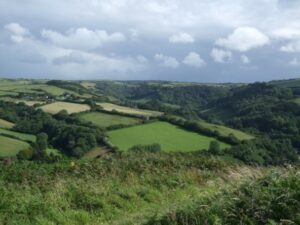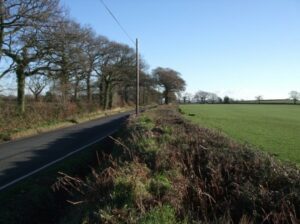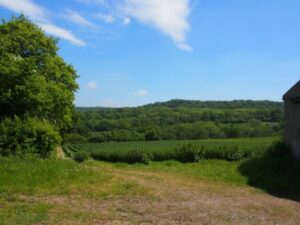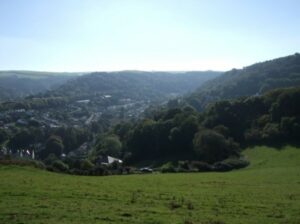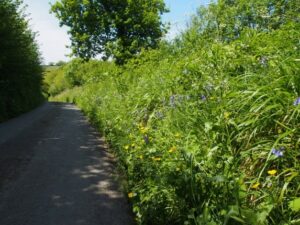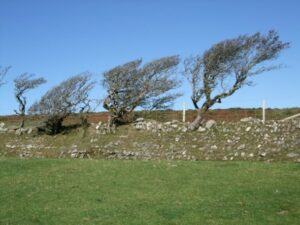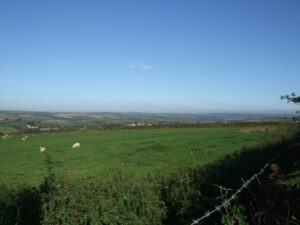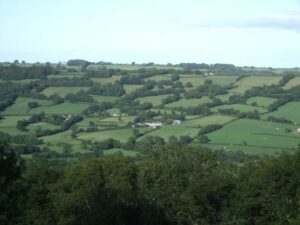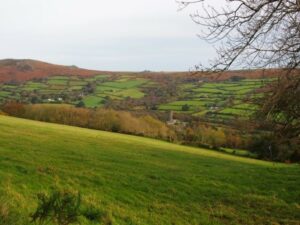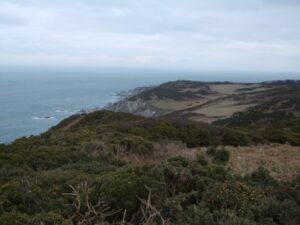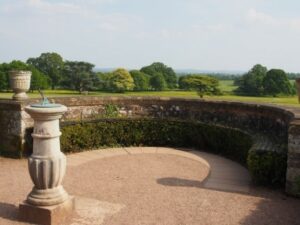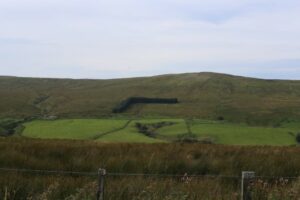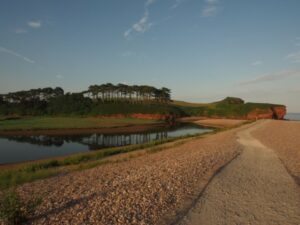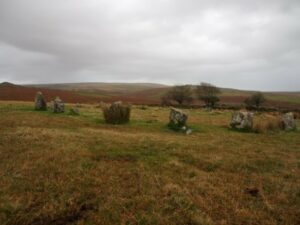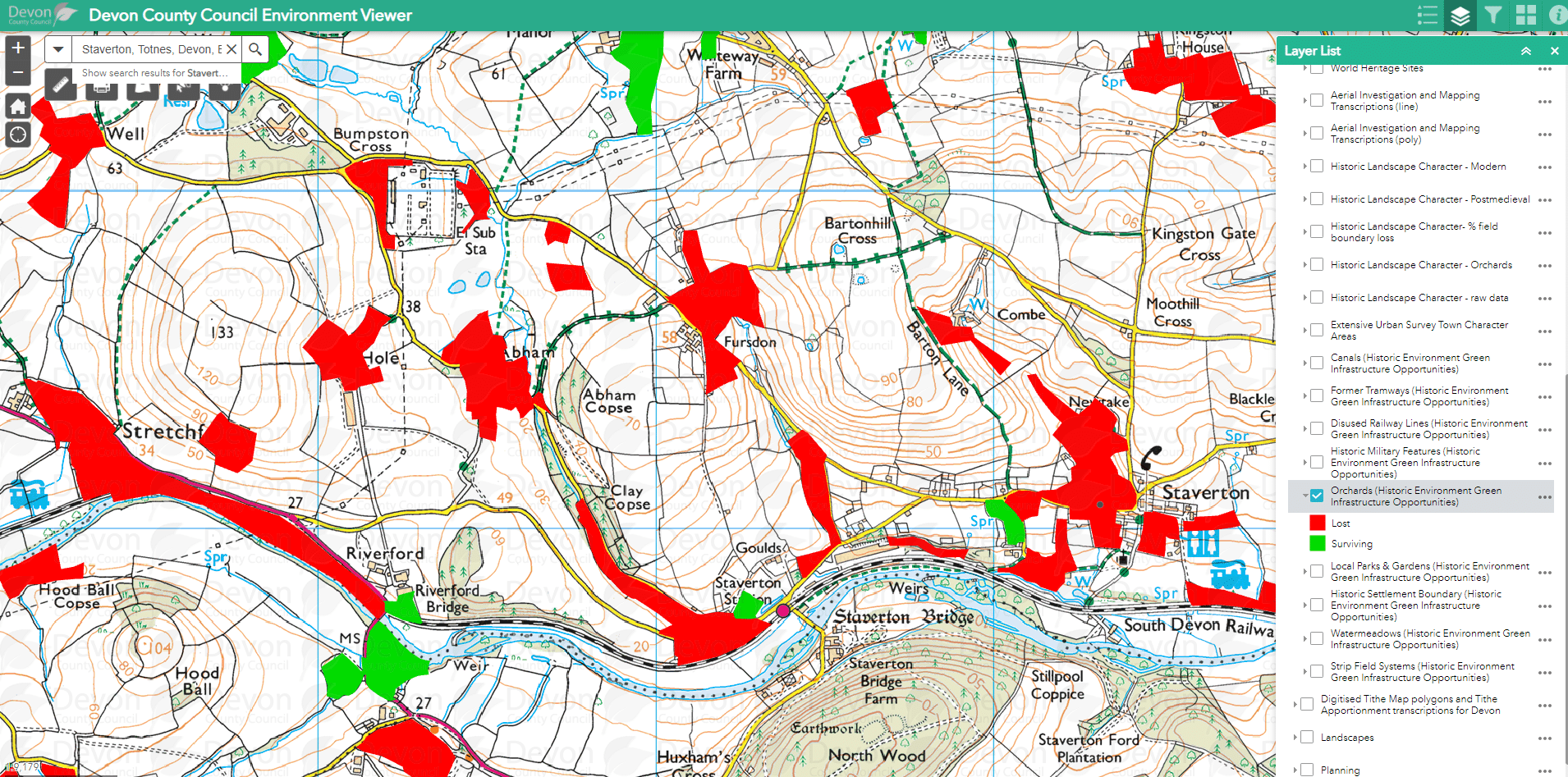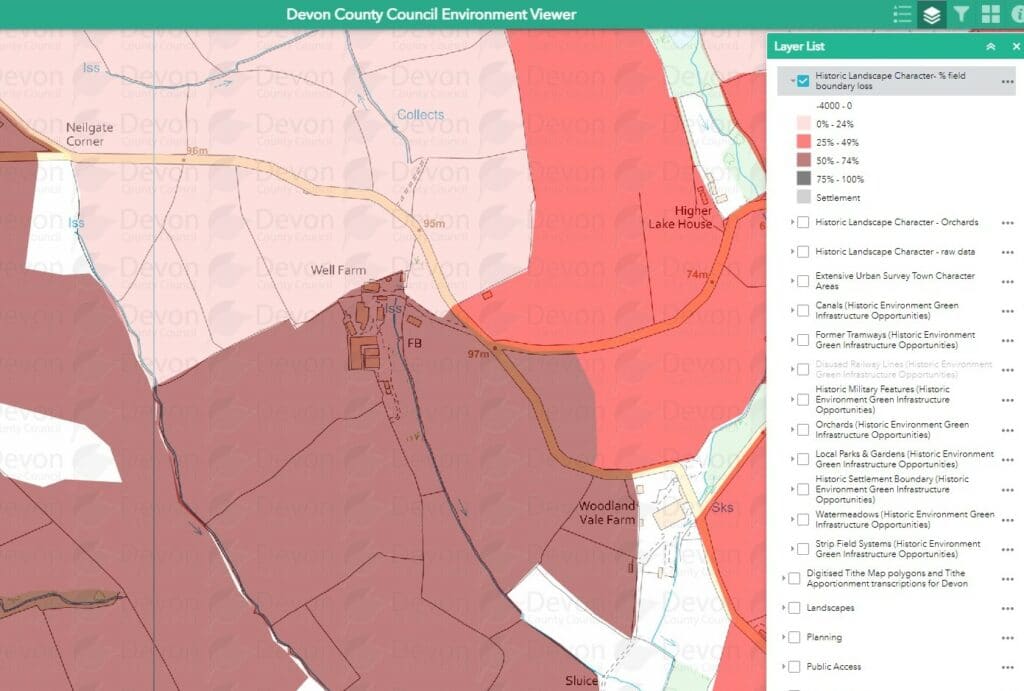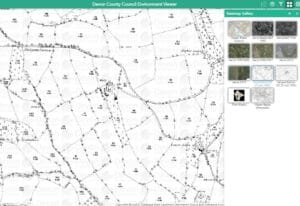A tree in the right place fits comfortably into its landscape surroundings. Getting a tree in the right place is not an accident – it’s about responding to the character and history of the landscape in positive ways, which can inspire creation of our future landscapes. It’s also about identifying where we can encourage landscapes to be dynamic and evolve through natural regeneration of trees, scrub, and woodland.
Being sensitive to landscape character and history doesn’t mean that we always have to recreate the past, or that we can’t be innovative. This section shows how to gain a deeper understanding of the wider landscape of your site, and how additional tree growth can enhance landscapes in different ways. It also provides links to information on the Devon-wide Landscape Character Assessments, and the UK Forestry Standard (UKFS) 2017.
Best places to establish trees in Devon’s landscapes
The ‘sense of place’ created by landscapes forms the context to people’s everyday lives. Trees and woodlands are one of the key elements which make up Devon’s landscapes, but they take many different forms. For example, large blocks of woodland cloaking valley sides look very different from winding lines of riverside trees.
The diversity of landscapes is important, particularly in Devon, where there are lowland, upland, and coastal landscapes, and wide variations in geology, soils, settlement patterns and other factors which influence landscapes. Tree cover is therefore not uniform across Devon, and it is necessary to be sensitive to the local variations through an understanding of landscape character.
Landscapes are valued by people because of their scenic beauty, and the opportunities they offer to enjoy recreation, far-reaching views, and varied scenery. Therefore, access into landscapes is important for people’s health and wellbeing.
It is necessary to get a balance whereby people can experience woodlands and trees, but also look out over long views. New trees and woodlands which are well integrated into the landscape will fit in and will not look out of place. They will also enhance the character of the landscape, retaining its distinctive identity, and enabling people to feel safe and comfortable within it.
Encouraging trees on farmland
There are many ways of increasing the number of trees on farmland, from allowing natural regeneration in field corners to large-scale woodland planting. There are opportunities to plant hedges, encourage hedgerow and in-field trees, link woodlands, plant orchards or diversify into agro-forestry crops. What’s most appropriate will depend on the landowner’s objectives, and on the character of the landscape.
The Devon-wide Landscape Character Assessments (LCAs)
The Devon-wide Landscape Character Assessments provide detailed descriptions of Devon’s landscapes, and what makes them unique. It does this by identifying a series of Landscape Character Types and Devon Character Areas. For each one, guidance is provided on how landscape character can be enhanced through tree planting and management.
The following hypothetical example from the ‘East Devon Central Ridge’ Devon Character Area (DCA) illustrates the four Landscape Character Types (LTCs) within it. It then shows how tree cover can be increased in a way that enhances landscape character, promotes biodiversity, protects heritage, increases sustainable productivity of the land, and addresses climate change.
Hover over, click or tap the numbers on the images for more information.
A typical existing scene in the East Devon Central Ridge Devon Character Area
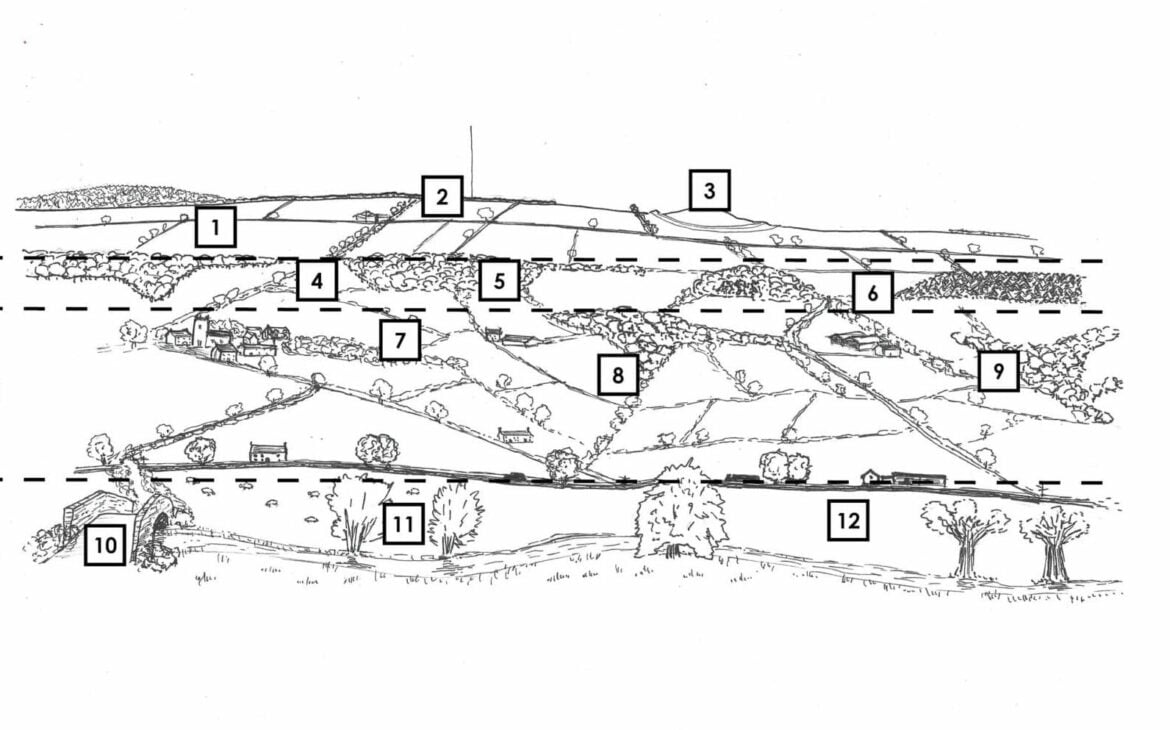
Large scale landscape
Landscape Character Type: Open inland planned plateaux
A large-scale landscape of regular-shaped fields with straight edges
Beech trees
Landscape Character Type: Open inland planned plateaux
Lines of beech trees alongside roads and in hedges
Archaeological feature
Landscape Character Type: Open inland planned plateaux
Archaeological feature in prominent hilltop location
Steep wooded scarp
Landscape Character Type: Wooded scarp slopes
Steep wooded scarp forms dramatic backdrop to lower valley below
Extensive woodland
Landscape Character Type: Wooded scarp slopes
Extensive patches of woodland with both deciduous and coniferous trees
Trees and hedges
Landscape Character Type: Wooded scarp slopes
Trees and hedges, plus grassland and wet-flush habitats
Medieval fields
Landscape Character Type: Upper farmed and wooded valley slopes
A smaller-scale landscape comprising a patchwork of medieval fields in irregular shapes
Hedgebanks
Landscape Character Type: Upper farmed and wooded valley slopes
Species-rich hedgebanks with hedgerow trees line lanes and fields
Small woodlands
Landscape Character Type: Upper farmed and wooded valley slopes
Small woodlands with organic shapes, often associated with woodland edge and grassland habitats
Stone bridges
Landscape Character Type: Sparsely settled farmed valley floors
Stone bridges are historic landscape features
Riverside trees
Landscape Character Type: Sparsely settled farmed valley floors
Riverside trees (e.g. willow and alder) along river banks
Open, flat landform
Landscape Character Type: Sparsely settled farmed valley floors
An open, flat landform with a simple landscape pattern
A typical scene in the East Devon Central Ridge Devon Character Area in 30 years time with increased tree cover
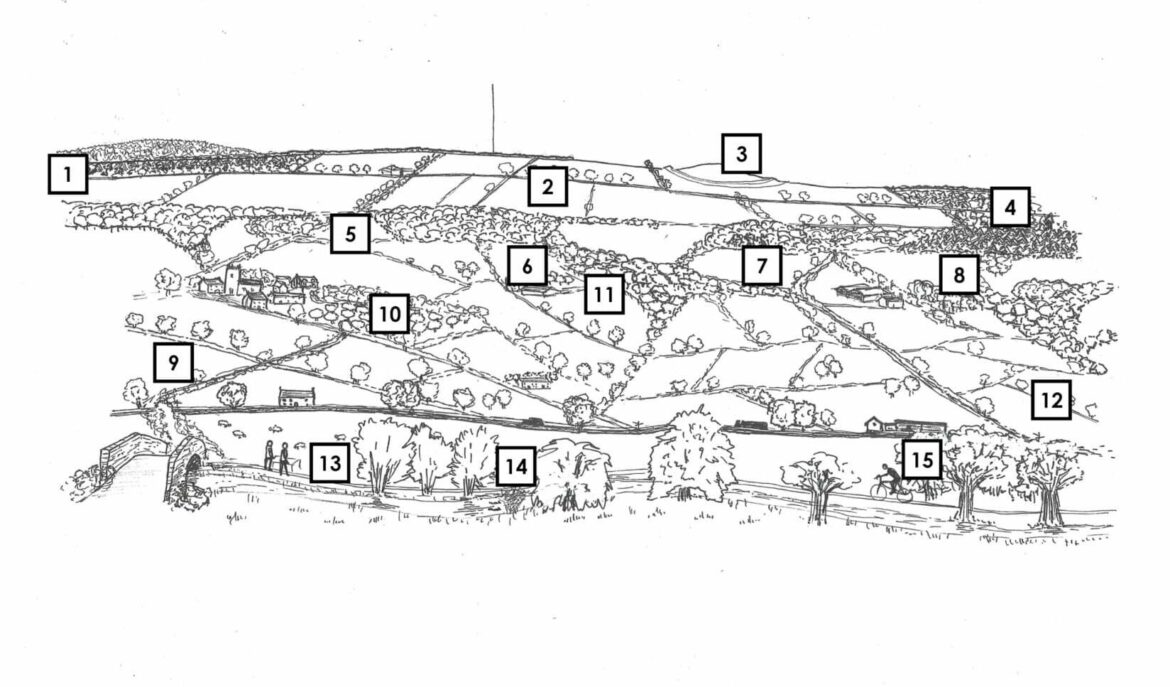
Scrub regeneration
Landscape Character Type: Open inland planned plateaux
Scrub regeneration on the least productive agricultural land provides new habitat
Beech hedge restored
Landscape Character Type: Open inland planned plateaux
Hedgebanks restored and new hedgerow trees planted / allowed to grow out to enhance landscape pattern
Archaeological site kept clear of trees
Landscape Character Type: Open inland planned plateaux
Archaeological site kept clear of trees and viewpoint remains open
Productive woodland
Landscape Character Type: Open inland planned plateaux
Large scale planting of productive woodland, within existing landscape framework and linking with existing woodland.
Existing habitats retained
Landscape Character Type: Wooded scarp slopes
Existing rough grassland (used by bats for foraging) and wet flush habitats retained
Farm orchard
Landscape Character Type: Wooded scarp slopes
Small farm orchard replanted
Hedge managed and some hedgerow trees allowed to grow out
Landscape Character Type: Wooded scarp slopes
Former improved grassland field reverting to dynamic scrub/ woodland habitat
Woodlands
Landscape Character Type: Wooded scarp slopes
Organic shape of existing woodlands reflected in new woodland planting
Field patterns
Landscape Character Type: Upper farmed and wooded valley slopes
Historic field patterns reinstated, strengthening landscape pattern and wildlife corridors, whilst reducing flooding and soil loss.
Community orchard
Landscape Character Type: Upper farmed and wooded valley slopes
New community orchard
New woodland
Landscape Character Type: Upper farmed and wooded valley slopes
Woodlands linked with new woodland, copse and hedge planting.
Hedgerow trees
Landscape Character Type: Upper farmed and wooded valley slopes
Infield and hedgerow trees planted / allowed to grow out
Riverside path
Landscape Character Type: Sparsely settled farmed valley floors
New riverside path allows access to countryside
Riparian (river bank) trees
Landscape Character Type: Sparsely settled farmed valley floors
New riparian trees stabilise river bank
Regeneration of valley floor wet woodland
Landscape Character Type: Sparsely settled farmed valley floors
Wet woodland regeneration of valley floor creates new habitat and slows flooding
Best place to plant new hedges
Consider planting new hedges:
- to fill in gaps in networks (to restore landscape condition, quality, and connectivity for wildlife).
- along contours (to capture water pollutants and soil, and to reduce flooding).
- parallel to existing hedges (green lanes are especially good for wildlife)
- where hedges once were (to restore historic field patterns and strengthen landscape character). Use historic maps on DCC Environment Viewer to identify lost hedges.
Visit the Devon Hedge Group website for more guidance and information.
Best place to locate trees in urban areas
The Urban Tree Manual is useful for anyone involved in planting trees in towns and cities. It includes guidance on choosing a site and assessing constraints in urban areas and also covers tree selection and other relevant topics.
See also the best practice guidance for ensuring the successful establishment of street trees in urban areas on DCC’s Environment website – trees and woodland.
The UK Forestry Standard (UKFS) 2017 and the Devon Landscape
All tree planting schemes greater than 5 hectares (greater than 2 hectares in National Parks and Areas of Outstanding Natural Beauty) need to prepare a Forest Management Plan in line with the UKFS 2017. The UKFS 2017 identifies seven key stages in the production of a Forest Management Plan, and this guidance principally applies to stages 1-4. See the stages involved in the production of a forest management plan, and how this guidance can help
Section 6.4 of the UKFS (pages 96 – 127) relates to forests and landscape. It identifies four landscape context factors and seven Forest Design Principles which should be used in the siting and design of new planting. Although the production of a Forest Management Plan is only compulsory for larger schemes, the principles are still relevant for smaller schemes, and will help people establishing new woodland to get the right tree in the right place. Landscape context factors, and sources of information for Devon.
The well-established Forest Design Principles identified in the UKFS can be applied in Devon, not just for large-scale forest planting, but also to smaller-scale tree planting schemes. Information on the Forest Design Principles below (shape, landform, pattern of enclosure, scale, diversity, unity, and spirit of place) will help you understand how to use the Devon-wide Landscape Character Assessments when approaching a new woodland creation scheme.
-
Principle 1: Shape
The shapes of forests and woodlands within the landscape can be the most striking visual features: both the overall shape, and the patterns of species and felling coupes within.
In Devon, woodlands that are organic in shape, reflecting contours and centuries of management, are generally accommodated more easily in the landscape than straight-edged forests, which can appear very artificial. However, there are some places, such as LCT A1 Open Inland Planned Plateaux where straight field edges are characteristic of the landscape, and where more regular-shaped tree blocks could be appropriate.
Left: Organic-shaped woodland near Ilfracombe, North Devon
Right: Straight roads and hedges in the Open Inland Planned Plateaux landscape of the Eastern Blackdowns Ridge
Analysis: Identify the local Landscape Character Type that your proposed woodland creation site is located. Consider views across the landscape. Does existing woodland in this landscape have a characteristic shape? Is it influenced more by landform or pattern of enclosure? Would a straight edged forest of a formal geometric shape fit in or look out of place? Would a more naturalistic shape of woodland with irregular, softer more dynamic edges work better? Use your analysis to influence the siting and design of your new woodland.
-
Principle 2: Landform
In hilly or mountainous areas, landform is usually the dominant and most obvious landscape influence for forest and woodland design.
In Devon, landform is also a strong landscape influence on woodland location. Many ancient semi-natural woodlands remaining in Devon today occur on steeper slopes which were the most problematic for past human settlers to clear and plough for agriculture. Many types of landscapes in Devon are dominated by their landform including 1D Estate Wooded Ridges and Hilltops, 1E Wooded Ridges and Hilltops, 2A Steep Wooded Scarp Slopes, 3G River Valley slopes and Combes and 4C Coastal slopes and Combes with Settlement
Left: Staple Hill on the Blackdown Hills Scarp (Landscape Character Type 2A Steep Wooded Scarp Slopes)
Right: Steep woodland near Ilfracombe (Landscape Character Type 4C Coastal Slopes and Combes with Settlement Landscape Character Type)
Analysis: Identify the local Landscape Character Type that your proposed woodland creation site is located. Consider views across the landscape. Does existing woodland in this landscape relate strongly to the landform? Is there a distinct change of woodland cover between steep slopes and flatter areas? Does this contribute to the distinctive scenery within a protected landscape? If yes, how could your new woodland complement and strengthen this pattern? Use your analysis to influence the siting and design of your new woodland.
-
Principle 3: Pattern of enclosure
In lowland areas where landform is subdued, field patterns are usually the dominant and most obvious landscape influence for forest and woodland design.
The patchwork field patterns created by hedges are one of Devon’s most diverse and distinctive characteristics, occurring in much of the county. The small, irregular fields on valley sides (e.g. Landscape Character Type 3A Upper farmed and wooded valley slopes) are often medieval in origin, with the hedges themselves hundreds of years old and providing habitats for a wide range of wildlife. These areas, therefore, have less capacity to accommodate larger woodland blocks.
The larger, regular field pattern found on the higher land is much later, and reflects parliamentary enclosure of common land, or the enclosure of moorland, in the 18th and 19th Centuries. Larger blocks of woodland could fit into the existing field pattern without obscuring it. On the higher land, hedges are more likely to be stone-faced, with beech hedges that may be tightly trimmed or allowed to grow out to create sculptural lines of trees (e.g. Landscape Character Type 2D Moorland Edge Slopes).
Left: Lowland hedges along a lane in spring, mid Devon (Landscape Character Type 3A Upper Farmed and Wooded Valley Slopes)
Right: Stone faced hedge with wind-sculpted trees near Combe Martin (Landscape Character Type 2D Moorland Edge Slopes)
Analysis: Identify the local Landscape Character Type that your proposed woodland creation site is located. Consider views across the landscape. What is the characteristic field pattern? Is your site typical of this? Is the field pattern ancient (medieval) and distinctive? Check OS 1:25,000 maps and Historic Landscape Characterisation data on DCC environment viewer to find out. Would your woodland creation proposal fit within or obscure this pattern? Use your analysis to influence the siting and design of your new woodland.
-
Principle 4: Scale
Scale describes the relative size of visual elements as seen by the viewer. Generally, the scale of forest and woodland shapes should reflect the scale of the landscape.
There is a diversity of scale amongst Devon’s Landscape Character Types, with the landscapes of Plateaux and Ridges (Landscape Character Types 1A-1L) and Rolling Hills (Landscape Character Types 5A-5D) generally of a larger scale than Valley landscapes (Landscape Character Type 3A-3H).
Smaller scale landscapes are generally more sensitive to the introduction of extensive woodland planting, as it can appear as a large block, dominating its surroundings. In these areas, a series of smaller woodlands, that link existing tree cover and are irregular in shape, would fit much better into the existing landscape.
The larger-scale landscapes, particularly those with existing trees and hedge, and later, regularly shaped fields, generally have a greater capacity to accommodate larger productive woodland areas, as it will have less impact on their landscape character.
However, some of Devon’s largest-scale landscapes are open moorland and estuarine areas, which are characterised by their openness, and also by their rich ecology, archaeology, and habitats. Such landscapes therefore offer less potential to accommodate woodland planting, as this would fundamentally alter their special qualities, including their extensive open, sweeping, moorland character.
Left: Large scale landscape near Braunton (Landscape Character Type 5C Downland)
Right: Small scale landscape looking east from Dumpdon Hillfort (Blackdown Hills) (LCA 3A Upper Farmed and Wooded Valley Slopes).
At a strategic landscape scale, the following types of landscape in Devon are recognised as having a relatively large-scale pattern of enclosure and the existing presence of trees. These areas therefore offer the greatest capacity to accommodate larger areas of productive woodland over 5ha without detriment to their existing landscape character:
- 1A: Open inland planned plateaux
- 1C: Pebblebed heaths (outside designated areas)
- 1D: Estate wooded ridges and hilltops
- 1E: Wooded ridges and hilltops
- 1H: Forested plateaux
- 1J: Farmed and forested plateaux
- 2A: Steep wooded scarp slopes
- 3E: Lowland plains
- 3G: River valley slopes and combes
- 5D: Estate wooded farmland
Analysis: Identify the local Landscape Character Type that your proposed woodland creation site is located. Consider views across the landscape. Is the landscape scale small and intimate, or large and extensive? Use your analysis to influence the siting and design of your new woodland. If wanting to establish large scale woodland in a small-scale landscape, try to fragment the woodland to respect the scale and pattern of the landscape.
-
Principle 5: Diversity
Diversity refers to the number of different elements in a design. Diverse forests are usually more visually appealing, but the level of diversity should be appropriate to the situation.
Devon benefits from a great variety of different landscapes, or ‘landscape character types’ (LCTs). The pattern of LCTs means that most views will include several LCTs, creating diverse and constantly changing scenes as one moves through the landscape. For example, a view may encompass moorland summits, steep escarpments, rolling farmland, flat valley floors, towns, roads, woodland, and open water.
When a landscape is this diverse it is often relatively easy to accommodate new elements (such as woodland) within it. There are also often opportunities to accommodate a wider range of the tree types referred to above.
Where landscapes are more uniform, they often have a relatively simple palette of elements, and therefore a narrower range of tree types which could be accommodated. For example, in areas of high open moorland (e.g. LCT 1K), additional tree cover may need to be limited to natural regeneration along upland valleys and moorland edges.
Where landscapes are currently uniformly forested, there is potential to enhance their diversity through introducing broadleaved species, irregular edges, and glades. If these plantations are on ancient woodland sites, then there are opportunities to restore them to deciduous woodland with native ground flora; this would greatly increase their biodiversity.
Left: A diverse scene at Widecombe-in-the-Moor, including moorland, fields, woodland, and village. (LCTs 2D Moorland Edge Slopes and 1L Upland Moorland with Tors)
Right: An example of a dynamic landscape – Cliff-top scrub mosaic, Hartland (LCT 1B Open Coastal Plateaux)
Analysis: Identify the local Landscape Character Type that your proposed woodland creation site is located. Consider views across the landscape. Is the landscape simple or complex? What types of trees and woodland could be integrated in a way that respects the intrinsic landscape character? Use your analysis to influence the siting and design of your new woodland.
-
Principle 6: Unity
Unity is achieved when forests or woodlands integrate well with other features and look as though they belong in the landscape. Unity also applies to the integration of the various elements within a forest design.
There are many examples in Devon of trees and woodlands which (by accident or design) work together to create a harmonious whole, with no single elements standing out. There is a risk of this balance being disturbed, so in these areas, increasing tree and woodland cover must be done with great sensitivity, focussing on expanding what is already there, and restoring what may have been removed (with reference to historic maps, Parkland Management Plans, etc.). Unity does not mean monotony – ecological diversity and dynamism remains key.
Left: Designed landscape at Killerton, with parkland appearing to merge with the wooded landscape beyond (LCT 5D Estate Wooded Farmland)
Right: An example from the Pennines, showing a poorly integrated L-shaped woodland plantation. There are similar open moorland landscape types in Exmoor and Dartmoor which are also very sensitive to the introduction of geometrically shaped woodland blocks, particularly on more prominent hillslopes.
Analysis: Identify the local Landscape Character Type that your proposed woodland creation site is located. Consider views across the landscape. How could more trees and woodland fit within the existing landscape framework? Take inspiration from the sketches in this guidance and review the LCA guidelines. Use your analysis to influence the siting and design of your new woodland.
-
Principle 7: Spirit of Place
Spirit of place is a term used to describe the intangible qualities, such as wildness, tranquillity and cultural associations, that make a location special or unique.
Devon contains many distinctive landscapes, each with a unique sense of place. This is a result of a unique combination of elements, as well as intangible qualities.
Trees and woodlands may contribute to this sense of place, by forming a recognisable feature in a landscape, such as the distinctive pines on coastal headlands around the mouth of the Otter estuary.
Conversely, a lack of trees and enclosure adds to the valued experiential qualities of openness, wide spaces, and expansive panoramic views in some Devon landscapes, such as on the high upland moorland in the north of Dartmoor.
In some places, landscapes with an open exposed character contrast starkly with adjacent valleys with a secluded and wooded character, giving a distinct sense of place. This is the case where open coastal plateaux abut secluded valleys and coastal combes within the Hartland Peninsula in North Devon.
Left: Coastal pine trees contribute to the spirit of place of the Otter estuary (LCT 4A Estuaries)
Right: The lack of trees and sense of openness on Dartmoor’s high moorland contributes to its spirit of place (LCT 1K Upland Moorland with Tors)
Analysis: Identify the local Landscape Character Type and Devon Character Area that your proposed woodland creation site is located. Consider views across the landscape. Explore further – is this a historic designed landscape? Do existing woodlands and trees create distinctive features that are instantly recognisable? Would your proposals conserve and enhance these? Is there scope to create new features that take advantage of the landscape in the same way, for example, a clump of trees on the apex of a conical hill, or creating a focal point for a long view across a valley? Use your analysis to influence the siting and design of your new woodland. Outstanding creative landscape and woodland design today will be welcomed in the future, and may bring a new identity to a place that is currently bland or lacking in distinctiveness.
Identifying restoration opportunities for lost tree cover
Devon has excellent historic environment resources, which are publicly accessible through the Devon County Council Environment Viewer. These can be used to inform tree planting and regeneration plans, for example by identifying opportunities to restore former woodland, orchards, hedges, and other features which have been lost over the last century or beyond. Such former land uses indicate suitable ground conditions in the past and may help guide restoration opportunities. Of course new woodland creation is not limited to ‘old’ sites.
Identifying orchard sites
The Historic Environment menu of the Devon County Council Environment Viewer has a layer showing both lost and surviving orchards. The image below shows orchards lost and surviving in the Staverton Area.
Identifying lost woodland and hedges
The Devon County Council Environment Viewer can be used to identify the locations of woodlands and hedge lines lost in the last 150 years by comparing maps from the 19th Century and today.
Restoring lost hedge lines can help to enhance the landscape pattern, as well as provide additional habitat corridors and reduce flooding and soil loss. The slowing of water and soil is best achieved by hedges that run along the slope, rather than up/down it, so if funds are limited, prioritise restoring or creating hedges which run along the slope.
The images below show field patterns for the same location today (top) and in the 19th Century (bottom).
Map showing lost hedge lines
Map showing field boundary loss
How to use the Devon Environment Viewer to find the locations of lost hedge lines
Click on the ‘layers’ icon in the top right, and select the ‘Historic Environment’ tab. Then select ‘Historic Landscape Character % field boundary loss’. This will show you which areas of Devon have lost the most hedges.
Click on the ‘Basemap Gallery’ icon in the top right. Select the ‘First Edition OS 25inch 1880-1899’. The base map will change and by comparing the current and historic maps you will be able to see which hedges have been lost.
Step 3: Check for potential sensitivities – Devon Local Nature Partnership (devonlnp.org.uk)
